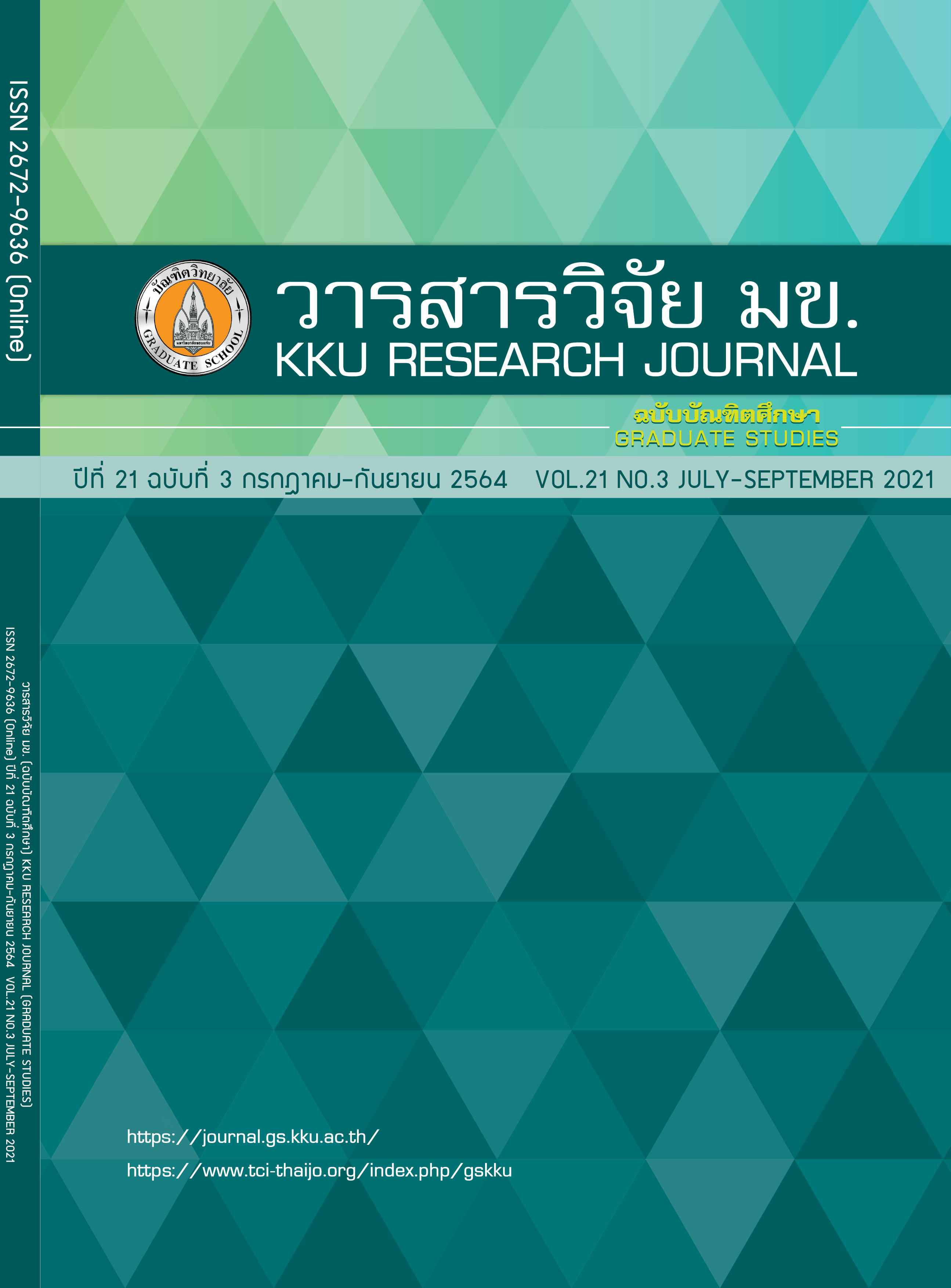Comparative TLC Chromatogram and Phytochemical Study on the Stem Barks of Wrightia arborea (Dennst.) Mabb. and Wrightia pubescens R.Br.
Keywords:
Mok-Mun, Wrightia arborea (Dennst.) Mabb., Wrightia pubescens R.Br.Abstract
“Stem bark of Mok-Mun” is medicinal plant used in Thai traditional medicine. Originating from the stem bark of two species are Wrightia arborea (Dennst.) Mabb. and Wrightia pubescens R.Br. The Mok-Mun stem bark sold in herbal drug stores, look like small blocks and are similar to each other. It is difficult to identify the species of Mok-Mun crude drug. Therefore, this comparative study aimed to investigate TLC chromatogram and phytochemical data of Mok-Mun stem bark in both species. The result of the TLC chromatogram exhibited that the mobile phase dichloromethane: methanol:formic acid (7:3:0.2) showed different band color at hRf = 47. A phytochemical screening study of both species indicated the presence of triterpenoids. The results exhibited the small difference. The comparison of biological activities of two types Mok-Mun is required to confirm whether these plants can be used interchangeably to prepare the traditional medicines.
References
Chayan P, Manmas C, Wichian J. A description of King Narai’s medicinal formula. 3rd ed. Bangkok: Amarin printing and publishing; 2015. Thai.
Thongchai P, Niwat P. Ton-mai-ya-na-ru. Nonthaburi: Offset press; 2001. Thai.
Thailand development research institute. National list of essential medicines [internet]. 2012 [cited 2020 Jun 1]. Available from: http://kpo.moph.go.th/webkpo/tool/Thaimed2555.pdf. Thai.
Forest and plant conservation research office. Mok [internet]. [cited 2020 May 30]. Available from: http://www.dnp.go.th/botany/detail.aspx?words=โมก&typeword=group. 2017. Thai.
Office of the royal society. Mok-Mun [internet]. [cited 2020 May 30]. Available from: http://www.royin.go.th/dictionary/. 2011.
Rachun P. Mok-Mun [internet]. [cited 2020 May 30]. Available from: http://www.dnp.go.th/botany/PDF/publications/saranukrom.pdf. 2016.
Sudarat H. Mok-Mun [internet]. [cited 2020 May 28]. Available from: http://www.phargarden.com/ main.php?action=viewpage&pid=270. 2010.
Middleton DJ, A new species of Wrightia (apocynaceae: apocynoideae) from Thailand [internet]. [cited 2020 May 30]. Available from: http://frc.forest.ku.ac.th/frcdatabase/bulletin/Document/ThaiForestBulletin35_010.pdf. 2007.
Mahendra K, Nityanand V. Pharmacognostic evaluation of Wrightia arborea (Densst.) Mabb. Int J Res Ayurveda Pharm 2014; 5(1): 89-94.
Khyade MS, Vaikos NP. Comparative phytochemical and antibacterial studies on the bark of Wrightia tinctorial and Wrightia arborea. Int J Pharma Bio Sci 2011; 2(1): 176-181.
Ragasa CY, Antonio V, De Los Reyes MM, Mandia EH, Shen C. Chemical constituents of Wrightia pubescens (R.Br.). Der Pharmacia Lettre 2014; 6(6): 14-19.
De Los Reyes MM, Oyong GG, Antonio V, Shen CC, Ragasa CY. Cytotoxic compounds from Wrightia pubescens (R.Br.). Pharmacognosy Research 2018; 10(1): 9-15.
Ragasa CY, Antonio V, De Los Reyes MM, Mandia EH, Shen C. An isoflavone from Wrightia pubescens. Int J Pharmacogn 2015; 7(2): 353-355.
Santisuk T, Larsen K, editors. Flora of Thailand volume seven part one. Thailand: Diamond printing; 1999.
Noppamas S, Utai S, Prapai W. TLC: a simple method for qualitative analysis of Thai crude drugs. Nonthaburi: Department for development of Thai traditional and alternative medicine; 2008. Thai.
Yuttana W, Phusit S. Development of systems for determination of nutrients in Thai foods by high performance thin layer chromatography [internet]. [cited 2020 May 30]. Available from: http://repository.rmutr.ac.th/bitstream/handle/123456789/480/Fulltext.pdf?sequence=1%20%20&isAllowed=y. 2015.
Waraporn P, Suppachai T, Natsajee N, Tanit P, Prathan L, Srisomporn P, et al. Laboratory manual 632307 pharmacognosy. Khon Kaen: [n.p.]; 2017. Thai.
Alamgir A. Therapeutic use of medicinal plants and their extracts: volume 2 phytochemistry and bioactive compounds [internet]. [cited 2020 Jun 1]. Available from: https://books.google.co.th/books?id=2LZhDwAA QBAJ&printsec=frontcover&hl=th#v=onepage&q&f=false. 2018.
Iqbal E, Salim KA, Lim LB. Phytochemical screening, total phenolics and antioxidant activities of bark and leaf extracts Goniothalamus velutinus (Airy Shaw) from Brunei Darussalam. J King Saud Univ Sci 2015; 27(3): 224-232.
Joshi A, Bhobe M, Sattarkar A. Phytochemical investigation of the roots of Grewia microcos Linn. J Chem Pharm 2013; 5(7): 80-87.
Alihosseini F. Plant-based compounds for antimicrobial textiles [internet]. [cited 2020 May 29]. Available from: https://www.sciencedirect.com/topics/chemistry/triterpenoid. 2016.



